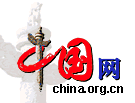Population: 107,166
Major area of distribution: Guangxi
Language: Maonan
Religion: Taoism, Polytheism
The Maonan ethnic group has a population of 107,166, living in the northern part of the Guangxi Zhuang Autonomous Region.
The Maonan communities are located in sub-tropical areas characterized by a mild climate and beautiful scenery, with stony hills jutting up here and there, among which small patches of flatland are scattered. There are many small streams which are used to irrigate paddy rice fields. Drought-resistant crops are grown in the Dashi Mountain area where water is scarce. In addition to paddy rice, agricultural crops include maize, wheat, Chinese sorghum, sweet potatoes, soybean, cotton and tobacco. Special local products include camphor, palm fiber and musk. The area abounds in mineral resources such as iron, manganese, stibium and mercury. The Maonans are experts in raising beef cattle, which are marketed in Shanghai, Guangzhou and Hong Kong.
People surnamed Tan take up 80 percent of the population. Legend has it that their ancestors earlier lived in Hunan Province, then emigrated to Guangxi and multiplied by marrying the local women who spoke the Maonan tongue. There are other Maonans surnamed Lu, Meng, Wei and Yan, whose ancestral homes are said to have been in Shandong and Fujian provinces.
The Maonan language belongs to the Dong-Shui branch of the Zhuang-Dong language group of the Chinese-Tibetan language family. Almost all the Maonans know both the Han and the Zhuang languages because of long contact with those people.
Economy
The Maonan people are chiefly engaged in agriculture, but also have sidelines which yield more than half their total income, such as weaving bambooware, raising beef cattle, making wooden articles and casting iron. Before liberation, their major farm tools were ox-pulled ploughshares, iron hoes, foot-pedaled ploughs, scrapers and scythes. Backward tools and farming techniques kept the agricultural production at a very low level for a long time.
Customs and culture
The Maonans with the same surnames and from the same clans usually live together in small villages with only a few households. The biggest village consists of not more than 100 households. Their houses and clothes are basically identical to those of their Han and Zhuang neighbors. Houses have two stories, with mud walls and tile roofs. The second floor is used as living quarters and the ground floor for livestock.
The major staples of the Maonans are rice and maize, and then millet, sweet potatoes and pumpkins. They all enjoy tobacco, alcohol, tea and hot peppers. They pick out big sweet potatoes with no injuries, dry them in the sun and leave them in the open at night to be drenched by dew. Twenty or 30 days later, potatoes are put into cellars or above the cooking stoves. After another 20 days or so, they are steamed and enjoyed as a delicacy.
The Maonan families are generally small and monogamous. In the past, marriages were all decided and arranged by the parents. There were customs like "not settling in the home of the husband," and a younger brother would marry the deceased elder brother's wife or vice versa. The remarriage of widows was greatly restricted. When a person died, a Taoist priest would be invited to recite scriptures and join in the funeral procession, the son of the dead person would "buy water" at a river or in a well to wash the body. Before the burial, chicken blood was sprayed into the grave to bless the spirit of the deceased and protect his or her offspring.
The Maonans celebrate the Spring Festival, Zhongyuan Festival and Pure Brightness Day, similar to those of their Han and Zhuang neighbors. However, the Fenglong Festival is unique to the Maonans and is celebrated by offering sacrifices to God and their ancestors to pray for a good harvest. Married daughters and relatives living in other places return to their home villages for the celebration. A special treat is five-colored rice. In the past, there were many taboos, such as suspending productive labor on festivals, which hindered the development of production. After 1949, weddings and funerals were simplified, and some superstitious activities were reformed.
Singing is a popular recreational activity of the Maonans. In addition, they also enjoy "Maonan opera," based on folklore and legends and portraying love affairs, anti-feudal struggles, joys and sorrows, partings and reunions, and the lofty ideals of the people.
Maonan carving and weaving have unique styles. The former comprises wood and stone varieties, delicate and vivid in imagery. The latter is famous for flowery bamboo hats and bamboo mattresses.
The Maonans are polite and hospitable, calling each other brothers and sisters when they meet. When guests visit, they entertain them with oranges and sweet potatoes. Guests, important or not, are always solicitously invited to dine with their hosts.
(China.org.cn June 21, 2005)

